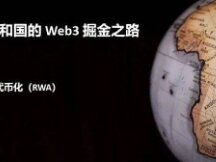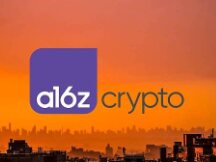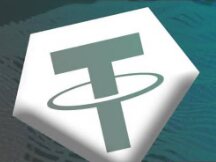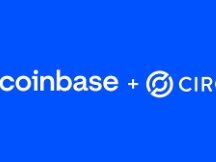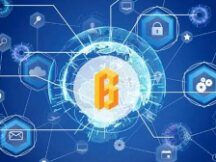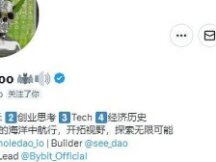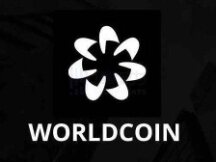First-Class Warehouse Research Report: Inter-Chain Bridge Track Analysis
instructions
By looking at the direction of DeFi improvement, we can see the path more clearly. In the DeFi summer of last year, the Ethereum ecosystem began to grow exponentially, but on the other hand, the rapid growth of the ecosystem posed the problem of Ethereum's insufficiency, which prevents further expansion of the ecosystem. At the same time, some people "run away" and fix their eyes on Level 2, while others "think and see" and engage in other chains outside of Ethereum.
In 2021, NFT's "JPG" market and the GameFi platform make this obvious. On the other hand, ecological development advances, when a critical development problem has reached an emergency. So, this year, we saw the return of the old public chains, the strength of the new chainsaw, and the expansion of Layer 2.
Several themes have been added to facilitate the arrival of DeFi over several seasons. However, the DeFi ecosystem of each chain in multiple chains remains independent, and the interconnection of multiple chains has become a necessary transition factor for development. In this context, the cross-chain bridge has become the new electricity in the lineage of the DeFi model and has won over the mainstream market.
An inter-chain bridge is a chain link device, allowing tokens and assets to be transferred from one chain to another. Two straps may have different procedures, rules, and control patterns, and the straps provide communication and interconnection to keep both parties safe.
In this report, we only present a more macroscopic organization of cross-link networks, which includes background tracking, interpretation, freeway growth, key travel points, and future improvements. And a dozen link chain solutions are listed to highlight the current service capabilities of this process combined with the various interconnection solutions currently available in the market.
Cross-chain bridges are a major problem in modern times, and at the time of this writing, the Ethereum Series 2 public chain and DeFi ecosystem are tied for more than $ 258.3 billion in cryptocurrency. Going forward, we'll see further improvements to the Cross-Chain Bridge, bringing more game settings to the entire DeFi ecosystem.
Method of analysis
the story
With the development of blockchain, nowCoexistence multi-chaînesMarket structure and developmentEthereum is the key, another public connection for sharing starsevents.
Two years ago, we were at the forefront of application scenarios with global requirements for Ethereum (DeFi, NFT, GameFi, and Web 3 of the future), and building green development is flourishing. On the other hand, the rapid growth of the ecosystem also exposes the problem of insufficient performance of the Ethereum base, and network congestion and high oil prices prevent further expansion of the ecosystem. At the same time, some people "run away" and fix their eyes on Level 2, while others "think and see" and engage in other chains outside of Ethereum.
In particular, you can hear the rapid growth of the public channel ecosystem outside of Ethereum following the DeFi Summer 2020 and 2021 "JPG" markets. Lots of public outcry (such as BSC, Solana, Ze, Avalanche, Terra, Fantom, etc.) led to consensus on extending and extending the impossible triangle in terms of scalability. The EVM compatibility allows easy integration of DeFi, NFT type projects to complete a simple re-fragmentation of the application carried out in Ethereum.
While this new chain offers lower costs, shorter turnaround times, and more, Ethereum remains the first choice for most DeFi operations, in large part because the network has a sleek and packaged industry. DeFi's current era where 'guessing is king', to attract more early users, the key chain in the audience uses a high APY to attract users, therefore began to have competing interference functions. According to DeFi Llama statistics, as of October 22, 2021,The value of DeFi locks in Ethereum has exceeded $ 161.5 billion, while other public channels such as BSC, Solana, Avalanche and others have also raised $ 78 billion., development has created a scale that cannot be underestimated.
The traffic initially collected at Ethereum was related to the creation of pay islands. Moreover, this is only exacerbated by the occurrence of more and more Layer 2 projects over the past two years. As of November 9, 2021, Ethereum L2's total securities will exceed $ 5 billion, doubling the amount in October.
The integration of multiple chains is the current industry model, and as public channels and Layer 2 projects increase and each ecosystem gradually improves, the demand for the use of chain assets by people inter- chains will grow rapidly, as will cross-chain links. There will be no exceptions, there will be tight demands.
development
interesting
The demand for blockchain scalability and the potential for blockchain to interconnect have led to new changes and advancements in cross-platform technology.
The classification of extension technologies is approximately as follows: Table 1-1:
Table 1-1 General classification of extended technologies

In terms of scaling technologies, Bitcoin scaling technologies include state channels, side chains, and atomic exchanges. for
Ethereum's scaling technology has pretty much gone through the process of state channel → sidechain → plasma → rollup, and in fact, it's also about Layer 2 development. Layer 2 developments include:
Note: Ethereum Sharding is a measurement solution within Ethereum and Layer 2 is a measurement solution outside of the Ethereum blockchain.
1) From layer 1 to layer 2
Ethereum is Layer 1. As a public system as a whole, many nodes work together, resulting in inefficiencies.
Raiden Network (Raiden Network) is an early phase of Ethereum, but never hot.
2) sab chains
We can say that the first layer 2 is a side chain, because the first state channel did not receive big requests from Ethereum. The advantage is that layer 2 is used, reducing the load on Ethereum. However, the sidechain works on its own and if the sidechain has some problem such as a malfunction or an attack on the sidechain node, the sidechain will cause the switch to malfunction, the result going back to layer 1 is also incorrect and security not not working well. enough.
3) Plasma
Due to concerns about the safety of the first side chains, safety plasmas arose. Plasma does not have total control. Evidence of machine fraud has emerged. When an error is detected in the plasma chain, the user can properly exit the bloodstream. String, so Plasma is safer.
But that's because Plasma allows them to report the bad results on the line and then complain about the inconvenience of the process, which ultimately doesn't make it popular.
4) Roll
The rollup is based on plasma.Improve the data validation process, compresses large amounts of data exchanged in level 2 blocks into compressed transactions and prints them to the chain. In order to ensure the efficiency of each operation, different plans have developed different procedures to ensure that the safety of the whole process is in accordance with standard 1..
Layer 2 contains a similar form, and all changes are pushed to another blockchain, and then final result changes or data transfers are sent back to the Layer 1, Ethereum keychain.
Overall, in response to the potential limitation of the BTC blockchain and high exchange rates, much of the technological expansion was announced at an early stage, focusing on the development of lightning networks, d 'other tie-down side chains, sharding and other business or technology. Continuous research of general equipment in general, focusing on various applications such as chain asset exchange knowledge, chain anonymous change and interference efficiency improvement.
•choj cross chain
The following should be noted:Hla Channel ≠ Hla Choj Channel. First of all, we need to clarify the concept. Cross-chain technology means that data and objects can be represented on different blockchains which have two sizes.objects and materials.
As many people confuse the relationship between Polkadot, Cosmos and cross the chain, Polkadot and Cosmos are mainly used.ShareThe chains have a very good impact and at the same time there is no difference between the chains better than the off-frame chains.
The simple understanding is that the cross link between Polkadot and Cosmos is close to layer 0 and users have to complete the cross chain according to their own design. Migration tools pose problems on different networks.
Legacy is now crossing the chain enough to meet DeFi's demands, and it's still a hot topic at the moment. Chained bridges, which are often discussed in this article, are an important source of chained assets and can be easily understood as a tool for chained assets. . Another option is Swap, an interconnected application that combines assets from different chains to create an interconnected pool that allows users to conduct property swap transactions between other chains.
Note: Now in some places the two way of chain crossing of assets are also divided into chain beads, the classification process is not correct and is only used for description purposes.

Figure 1-1's section behind over chain
Therefore, compliance with this article deals only with the connection of cross-links of assets, excluding data and information of cross-links (eg Polkadot, Cosmos). The above tips for improving the channel are designed to make general terms easier for users to understand and will not be covered further below. Unless stated otherwise, all links below represent property across the chain.
For more details on the development of the bridge, see Figure 1-2 below.

Figure 1-2 Inter-chain bridge optimization process
Note: As part of the bridge, the aurora contains the original shape of a combination of materials.
The concept of cross-chain has always been associated with the advancement of blockchain, and cut-chain interconnection is an area that has only grown in popularity over the past two years. From a cross-chain development perspective, this is usually a process from centralization to decentralization. The only thing that affects it, the examples here are for reference only.Different links with different themes may be created later due to different user needs.For example, users with more cash want to cross their assets through a more secure bridge, the same users will appreciate the functionality of the bridge.
early,Centralized exchange (CEX)It is the most common bridge used by all of us. Additionally, centralized wBTC and HBTC now account for nearly 90% of the BTC indexed coins market share, and certification sites alone can start to attract a majority of cars due to their popularity.
As the industry evolved, people became more and more dissatisfied with the controls in the environment.Multipoint verificationAfter all, this route is less bulky and more reliable than the middle route. Similar to the PoS Plasma used in the Polygon Bridge, the Solana Cross Chain Bridge wormhole was evaluated by 19 independent staff, etc., and each uses a different experience of the cross chain bridge method.
An easier way to use multiple acknowledgments has been to:Trust the miners in two stringsOf course, this is also what we see in many channels today.Throw / Destroy, lock chain A's aToken proximity and chain B smart contract oracle alert. After miners identify the new chain B bToken, destroy it when the user returns from chain B to chain A. B-chain bToken, release the first token registered by the user. Currently, many single chain link programs also use this fact-finding approach. However, in the fact that the token (bToken) can be used directly on the target, for example, when a user sends the USDC from Ethereum to BSC through AnySwap, the user uses it to get their token, anyUSDC . They cannot be redeemed directly by BSC. You must use the built-in AMM first, then do an additional conversion to convert the entire USDC to USDC 1: 1. This method is limited by the size of the pool. Therefore, this model cannot support multiple functions of multiple fine link ropes.
As long as there are "humans" involved in the system, the end result is uncertain. If he can act like an honest robot, he will theoretically be superior in terms of safety and classification.Atomic hash lock exchangeIt is a type of robot that we call a router. Currently using programs such as Anyswap V3, Shuttle Flow and Debridge.
However, atomic swaps also have limitations, for example, due to the high development cost and the need to create a one-to-one rather than one-to-one method. , poor performance and inability. Atomic exchange It is easier to use atomic exchange between two of the same algorithm. Therefore, the apparently perfect atomic exchange method is not used on the instrument.
to walk means
Justice
In the past, 1kx research partner Dmitriy Berenzon has provided more definitions of bridge crossings.
On the abstract stage,A "bridge" can be defined as an exchange of two or more blockchains.file system. In this case,Information can be sent to property, contract call, review, or event.Most inter-chain bridge projects include:
Monitoring: Usually has the role of an Affiliate or Oracle (Oracle), Validator or Relay responsible for overseeing the health of the chain.
Message Forwarding / Relaying: After receiving an event, the message sender is responsible for sending data from the channel to the channel.
Consent: In some cases, consent must be obtained from the participants overseeing the channel before the information can be sent to the target.
Signatures: Participants are required to encrypt and sign the transfer data for the purposes of an individual or part of multiple signatures.
To put it simply, the over-chain bridge is a chain link device, allowing tokens and assets to be transferred from one chain to another. Two straps may have different procedures, rules, and control patterns, and the straps provide communication and interconnection to keep both parties safe.
the current state of the track
Number of positions on the chain link
Prior to September 8, 2021, when Dmitriy Berenzon described the bridge on the line, there were over 40 different types of chain links, as shown in Figure 1-3. As of October 28, 2021 at least, it is estimated that it already has some in store.nearly a hundredCross Chain Bridge Projects, although some projects were not previously proposed by Dmitriy Berenzon, all recently have many new cross chain projects.

Figure 1-3 Completion of crosslinking work
In the figure above, from left to right, our ecosystems are the Cosmos, Ethereum, and Polkadot ecosystems, and those shown in the figure are the basic representation of the inter-chain bridge projects in each ecosystem.
Combined with the crosslinking work in progress,Most of the large cross chain bridges on the market today are two-story extended cross chain bridges and this is mainly due to Ethereum.Combursia, bridges of performance, polygon bridges, etc.
When the Ethereum DeFi ecosystem was mature, most of the links in the chain were created by other public chains before terminating the cross-chain assets with the primary focus of Ethereum (now here the cross chain is usually based on cut channel income). resources), because it helps spread its own DeFi ecosystem. Of course, the place is ideal if you must have attractive APYs, such as Avalanche, Fantom, Solana, etc.
And this year, with the rapid development of EVM and Layer 2 compatible chains, the Ethereum virtual machine-based network has diversified, as people are increasingly aware of cross-platform assets.
full scale of the cross chain bridge
1) TVV
According to Dune Analytics data analysis, as of November 1, 2021, the total number of locks on 16 bridges across the keychain, including @eliasimos, is estimated.UA 22.03 billionIt represents around 9.10% of DeFi's total stable holdings in US dollars. TVL has increased by 37.40% in the last 30 days and TVL by 135.36% in the last 60 days, the upward curve is also visible in Figure 1-4 below.

Figure 1-4 TVL size for interconnect (incomplete statistics)
Among them, the Ronin Bridge (Axie Infinity side bridge) with the biggest closure was $ 5.935 billion, Avalanche Bridges in second place with $ 5.26 billion, and Polygon in third place with $ 5.229 million in containers. Polygonal bridges. Second, Fantom Anyswap Bridge and Arbitrum Bridges now hold over $ 2 billion in a fixed position and hold a second tier. Plus, most of the other link builders now have a closing value of less than $ 100 million, and all of the different models are pretty accurate.
2) Distribution of closed equipment

Figure 1-5 Distribution of commercial locking equipment on the bridge chain (top to bottom by main equipment)
Currently, the main strengths of Cross-Chain Bridge can be divided into the following categories:
Among them, the highest closed inheritance in the bridge is WETH and ETH, AXS attracts many users through Sports to win the model and now at the second level, with stable funds and DeFi application management tokens included also an important part. . To do. In addition, in response to the rapid growth of the DeFi ecosystem for Polygon and the widespread application of ball chains, the fully locked position of the crossing bridge between MATIC and LINK also remains desired.
Overall, from the point of view of the measurement size of the cross-chain equipment, it can be clearly seen as follows:Currently, the demand for cross-platform games is mainly in the DeFi and blockchain gaming industries.
3) Overview of the number of independent residences in Chain Bridge

Figure 1-6 Overview of the number of free spaces in the large projects of the recent chain (unit: number)
Based on the data in Figure 1-6 above, written by PANews, the size of users of crosslinking activity has recently increased significantly. The total number of free residences for the 13 bridges in July was around 47,100, 62,800 in August, 127,600 in September and the first week of October the total is 34,600. current users, the number of specialized addresses in October is slightly higher than in September, it will reach 148,200 [10].
In addition, according to the data collected by @eliasimos by Dune Analytics, as of November 1, 2021, the number of independent sites associated with the Ethereum project is linked is as follows:203 426 ib.
the main points of the trip
The basic principles of developing a chain bridge are generally as follows:
1)Security: Confidence and optimism, resistance to terrorist attacks, consumer security and change
2)quick: Late completion and completion guarantee. In general, there is a balance between speed and safety.
Three)Scalability (Connection): select a target for users and developers, and select different difficulty levels to integrate additional plans.
4)peev efficiency: Details of the transaction, including the capital exchange rate and the exchange of assets necessary to secure the system;
5)keep state: Ability to deliver specialized equipment, multiple complex at the cutting edge of technology and / or telephone contract.
Different plans have different levels of safety, performance and connectivity, to better understand the key points of improving the rope bridge, you come as an option first to roughly hit the tracks, then move on to the special stages. The options are different and their pros and cons.
Classification (interconnection solutions)
Currently, there are four main types of bridge construction across the chain. They can be classified according to the process by which they use validated links (all types of validators).
1) Centralized Exchange (CEX)
Before the rise of the chain link, if users have to go through different chains of different chains, the most important procedure is usually to rely on the exchange in the middle like Binance and Huobi. The CEX crosslinking process only replaces the balance of multiple assets in a chain link bridge (although the return equation only requires replacement of the bridge's balance assets). is in your hands, there may be a risk of exposure to a small number of people ..) including production and damage to equipment.
Technically it's not a bridge at all, but it's simple and efficient. However, while you can trust Binance's reputation for the short term, no one can guarantee that it will not go astray or pose a risk. So there are a few more advantages down the road.
2) One-point / multipoint external identification
External point / multipoint validation, usually one or a groupwitnessLook for special locations in chains. During the asset connection process, the user first sends the assets to a specific location in the chain and then closes it. A third party should verify this information and make a recommendation. Once the agreement is found, the goal is achieved.foundryOwnership is equal. These validators often use other collateral tokens for security. The most representative external access protocols are secure multi-party computing (MPC), Oracle networks, connection, etc.
Representatives of external evidence include:wBTC. Examples of various external validation concepts include Anyswap, Synapse, PolyNetwork, etc. Overall it's like an external validation point, except that it rarely collects "errors" in terms of game inventory.sentimentsmore reliable than authentication,foughtThe effect depends on the process and the participants involved in the design.
3) Validation native
This is because ease of use does not depend on users of third-party equipment, seen and approved by electronic users (miners / nodes) in the chain, and does not require an impact on assets. This is usually done by running the user configuration on one chain of the Ethereum virtual machine (VM) on another chain.
The good thing about this model is that you don't have to believe it.Validation is performed by running a set of users on the base chain of a virtual machine on the target chain.Bridge participants on the bridge monitor the base chain message, then send the scan data and block headers, including cryptographic evidence, under the contract. After viewing the event entry, it performs a command of the target string. Overall it's an amazing model so the security is better.
In addition, users can see through the miners on both sides of the target, and the chain can not only be aware of the change of assets, but also aware of the information exchange.
However, the downside is also obvious: in order to provide simple proof of the two-string bridge, the developer must design and implement a new lighting system for the string and the purpose of identifying string data. At the same time, self-assessment costs more. As a result, the high cost, slow speed, and difficulty in scaling for multiple chains are disadvantageous, and there are some limitations in the first step.
Projects like Cosmos IBC, Near the Dragon Bridge, Polkadot SnowBridge, LayerZero, Movr, Optics, and Gravity Bridge all use traditional solutions.
4) Local monitoring (Apple network)
Local assessment is a type of partial assessment and is also a kind of joint assessment. Each knot is his"router", the router supplies the target phrase.treasure, not derivatives. In addition, the system and conflict resolution prevent the router from withdrawing funds from users.
As with many new developments of cross chain bridges, these designs have been adopted. Examples: Hop, Connext, Celer, Liquality and some simple atomic exchange systems. It can be seen that the point-to-point mode is effective in terms of security. At the same time, the cost, speed, and connectivity of multiple connections are also reasonable. However, the biggest problem is that the exchange of information is restricted and cannot be generalized.
As a simple example, by connecting several chains through a joint operation, the cross chain can be completed on two chains in a building construction. For example, the links in the chain connect to Ethereum and BSC. It provides the crossing of chains between Polygon and Ethereum. , and Polygon and BSC (see Figure 1-7 below).This inter-chain joint venture bridge can create one or more interconnected links below. For CPUs or Dapps that want to provide cross-link operations, all you need to do is access the cross-link connection for cross-link support.

Figure 1-7 A simple demonstration of connecting to the pool
By dividing the market cross chain according to the above idea, you can get the results shown in the table below.
Table 1-2 Classification of cross chain bridges

The information in the comments above is as of September 8, 2021, where: https://medium.com/1kxnetwork/blockchain-bridges-5db6afac44f8
A special bridge is a two-way communication system, each channel will have separate models, and the above classifications cannot be considered because it has all the different models such as Gravity, Interlay, and tBTC. Lightweight user interface, with validators in other ways.
Trade on a variety of connected networks
As described above, in summary, in addition to CEX,Three types of chain crossings have their own advantages and disadvantages, and the differences between advantages and disadvantages.
Depending on the security, speed, scalability, investment efficiency and measurement dimensions, the following images can be obtained.

Figure 1-8 Comparison of advantages and disadvantages of crosslinking solutions
Figure 1-8 above, written by Dmitriy Berenzon, can clearly show the pros and cons of various interconnected systems. We will take a look.
1) External validation: the advantage is that it is faster, cheaper, it can send data for free, a number of target strings can interact with the data, and it is easy to connect to several chains. However, this approach has the drawbacks of sacrificing security, forcing users / LPs to trust external users' money / data, and to trust security.
In some cases, external acknowledgments are usually addedLos yog linkage mechanism, improves user safety. To do this, validators need more collateral to secure assets> verify income, and as throughput increases, demand for collateral increases proportionally, reducing the efficiency of financial investments.
2) Race certificate: The information sent by the channel is verified by its own lowest level indicator, and the lowest level indicator is equal. If there is a security issue, it is also a problem with the chain itself. At the same time, it is not necessary to pledge assets based on market capitalization (higher investment).
However, these benefits come at the expense of capacity, so for each link the developer has to submit a new contract to the smart chainsaw user and the goal. In addition, racial recognition is slow and expensive. For example, if a happy model relies on evidence of fraud (eg, Hope), a slow trade might be 4 hours or more.
3) Local validation is quick and inexpensive because it uses local validation as a floating network model and does not require global validation. And no trust. Their safety is supported by the lower chain. Rollups also have advantages in terms of safety, as they have the necessary guarantee. At the same time, the penetration of the point-to-point liquidity network is also high. The downside is that data transfers are restricted and international transmissions cannot be performed (but it is sufficient for DeFi now).
Note: Not all local ratings are reliable. Some functions make unreliable sacrifices to improve the user experience or add additional functionality. For example: Hop adds some reliability to the high speed demand (AMB) system. The process opens up borrowers' capital in less than a day instead of waiting seven days to finalize the tender. If there is no AMB for a domain, the process should depend on the external resolver bridge.
Different models of different chains have very different configurations. Different users of different resources will have different perceptions of resources and security, and each bridge will focus on the area that the user needs. Therefore, it is likely that there will not be a single bridge on the chain in the future, and it is more likely that other bridges will be built together.
find a project
As mentioned above, there are now at least 70 interconnected jobs in the market, facing many such jobs. In this chapter, the first museum will be preserved, some agents crossing the links in the chain. Carry out business operations and report on the current state of the process. The service offers and encourages users to make investment choices.
For the distribution of bridges in this chapter, we focus on M. Refer to the Split Track by Pan Zhixiong.
1) Major bridges such as the Wormhole in Solana and the Rainbow Bridge in NEAR;The safety of this type of bridge is guaranteed.
2) Expertise, legacy technologies, including Ren Protocol, Store Network, DeCus, pNetwork, etc. are focused on expanding Bitcoin to other networks. Good growth compared to DeFi last summer.
3) More third party bridges like Poly Network, Celer, Anyswap, Hop Protocol, Synapse Protocol, etc.The third deck is also a shared area with high surveillance.
4) The inter-chain bridge aggregator is still in its infancy and its main goal is to integrate inter-chain link aggregators and help users become competitive and recommended to see inter-chain bridge solutions. channels based on actual user needs.
official bridge
Currently, the gateways to good public works are as follows:
Table 2-1 Legal guidelines

Note: The above TVLs are taken into account by @eliasimos from any official project website, block explorer, or dashboard, unless otherwise specified. The deadline to apply is November 8, 2021.
The bridge position usually indicates this option when changing the chain value, and, the bridge position shown in this section does not provide a part, users who know the chain junctions can skip to the next section. 2.2 Chapters to read.
Binance Choj
Official site: https://www.binance.org/en/bridge
Binance Bridge is the cross platform of Binance Smart Chain BSC, now supporting the joint venture between BSC, Ethereum, Tron, Solana and Binance Chain Network. The cross-platform assets sponsored by Binance Bridge include more than 80 major assets, including USDT, DAI, and ETH.
The principle of operation of the Binance Bridge is to first close one of the lower assets and then turn it into cross-link devices at a ratio of 1: 1. Using the ETH cross-chain tool from Ethereum to BSC For example, when a user wants to remove a cross-platform device (BETH, Binance-Peg Ethereum Token) from BSC to Ethereum, the encapsulated device (BETH) is called Violence. value., press 1: 1 to open the original asset (ETH). In the BSC chain, Ethereum cross chain assets typically occur in the BSC ecosystem as assets, generally defined as B. For example, BETH and BDAI are 1: 1 tam mapped encapsulated assets.
avalanche bridge
Official site: https://bridge.avax.network/
The Avalanche Bridge (AB Bridge) is a crossover device developed by the Avalanche protocol in early 2021. It is only used to solve the problem of users switching devices according to the ERC-20 standard of the Ethereum chain and assets of the Avalanche network.
Avalanche Bridge allows users to currently integrate over 20 ERC-20 assets with the Avalanche C chain. In the Avalanche ecosystem, Ethereum ERC-20 assets that cross the chains of the AB bridge are marked with the word ".e". Example: WETH.e is the state of the cross chain WETH for the Avalanche network.
Avalanche Bridge does not support native ETH and BTC assets, but WETH and WBTC encapsulated assets can be switched on the bridge.
Pont Terra
Official site: https://bridge.terra.money/
The Terra Bridge is the heritage cross chain provided by Terra (LUNA), which now supports communication of Terra peoples via BSC, Ethereum and other social networks, mainly supporting LUNA, ANC, UST stable and materials synthetic. Replace the assets of the Terra ecosystem (mAAPL, MAMC, mGOOGL, etc.) and assets (mBTC, mETH) and other assets.
The minimum Binance Bridge sponsored heritage crossing is around US $ 50-130 (minimum for slightly different assets), and the minimum cost of Avalanche Bridge crossing chains under the Avalanche protocol is: All bridges on the chain have a minimum cross chain limit while Terra Bridge has no ownership and cost limits.
brought to see
Official site: https://wormholebridge.com/#/
Wormhole is a legacy cross chain joint developed by Solana and Certus.One, launched on September 22, 2021, and is used to introduce the cross chain between Ethereum and Solana. With the release of version V2, Wormhole added support for the exchange of assets from the BSC and Terra chains.Support for NFT will be further extended in the future., to identify changes in ERC-1155 assets.
Before the emergence of the wormhole, when Solana users wanted to trade their assets with other devices in the blockchain network, the practice was to first sell the Solana chain SPL assets in a medium exchange FTX, then buy them on another channel. In the Solana ecosystem, users must first buy SPL assets from FTX and then top them up on the Solana channel.
This hard work limits the user's previous experience with the Solana chain until the wormhole event, where users can directly turn their Ethereum ERC-20 device into a tool based on Solana's SPL model. When users remove SPL assets from the Solana chain to Ethereum, they can exchange them directly to ERC-20 assets without having to go through the exchange's deposit and delete steps in the middle, making it easier to process the user.
In addition to the wormhole, cross-link chains that focus on non-EVM public channels such as Solana like Allbridge have gradually emerged.
rainbow bridge
Official site: https://ethereum.bridgetonear.org/
Rainbow Bridge is a community designed bridge over the bridge. It is used to connect Ethereum chain assets and currently only supports Ethereum ERC-20 tool exchange.
Rainbow Bridge has improved the account system. Typically, when a user walks through an asset chain, they need to transfer their wallet to the target network first and usually only supports connections to the same wallet. However, in Rainbow Bridge, users simply log into their nearby account, navigate to the wallet address and money they want to deposit and withdraw into the chain, and Rainbow Bridge just does the job.
multiple string
Official site: https://multichain.xyz/
Multichain.xyz is the leading cross-platform and multi-chain support for Ethereum Virtual Machine (EVM), and is a multi-chain platform jointly developed by the Anyswap team and YFI (Yearn.finance) developer Andre Cronje.
Currently, it supports the exchange of over 900 token assets across 10 blockchains, including Fantom, Ethereum, BSC, Polygon, Avalanche, Moonriver, Harmony, Arbitrum, etc.
The biggest advantage of Multichain.xyz over other platforms is that it encourages developers to use their own chain links and the relationships are broad. Why are cross-chain assets. Developers have complete freedom and everyone can define their own cross-chain token. However, Multichain.xyz's cross-chains often fail to generate global assets from strategic campaigns on their own.
pont polygonal
Official site: https://wallet.polygon.technology/bridge
Polygon Bridge is a bridge made from Polygon and is typically used to connect ERC-20 devices through the Ethereum chain.
Currently, Polygon Bridge supports the PoS Bridge and Plasma Bridge connection processes. PoS Bridge is an approved bridge, with a faster deletion time (around 30 minutes) and supports more Ethereum hardware models. higher.
Arbitrator Bridge
Official site: https://bridge.arbitrum.io/
The Arbitrum Bridge is an on-line bridge that was developed by Arbitrum, the Ethereum Layer 2 extension protocol, and is often used to process the interconnection of the Ethereum layer and Arbitrum.
Currently, Arbitrum Bridge supports the exchange of ETH and ERC-20 Layer 1 and 2 assets, and operating costs are determined in ETH.
When placing assets on an Arbitrum network with Layer 1 Arbitrum Bridges, it is important to note that there is a deletion deadline of at least 7 days after the deletion request. In other words, users must wait at least 7 days for the Layer 1 network key to be deleted before they can prove that the deletion was successful.
Door optimism
Official site: https://gateway.optimism.io/
Optimism Gateway is a bridge across the service chain developed by Optimism for the Ethereum Layer2 extension layer, often used to address functionality inherited from Ethereum and Optimism. The bridge now supports the exchange of key ERC-20 components in the ETH and Ethereum ecosystems.
Also note that there are still 7 days left for the withdrawal and release of the Optimism treasure.
tool bridge
Expertise, heritage bridges, old and modernThey mainly aim to spread Bitcoin to other networks.
On the other hand, due to the emergence of the application side (DeFi), the Wrapped Token model was approved in advance instead of skipping the pre-offer assets without trusting Polkadot and Cosmos, which are the main base of the cross chain. . It works under a smart contract model.
In contrast, Bitcoin, which is currently valued at $ 2.1 billion, has linked to the DeFi app, but has a big difference in size from the market value of BTC, which is 0.16% [ 20]. While cross-trades can be seen on BTC, ETH, or other public channel libraries, users can use their BTC to earn DeFi. With the help of the size of BTC users, its handling and packaging business, network effects and other characteristics, the DeFi ecosystem will be able to achieve rapid development.
Faced with a market of this size, there have been plenty of opportunities to promote Bitcoin to other networks, with strong growth over the past DeFi summer. Although not all solutions are the same, due to the use of multiple packaging, but token packaging. model is It also makes the investment efficiency relatively low.
WBTC
lub official website:https://wbtc.network/
Bitcoin funds in wBTC are stored in the BitGo agent wallet. Founded in 2013, BitGo specializes in providing digital cloud surveillance services to consumers. Schools like BitGo are their own registration companies governed by local laws and usually have special programs. Thus, law and insurance are two levels of guarantee for intermediary services.
For wBTC, the organization includes many well-known DeFi and wallets. According to traders, they will also have more wBTC in their hands. The so-called “big failure” is that when a financial security crisis strikes, everyone in the organization is lost. So, as a modern user, it is not your confidence in BitGo to be a leader, but your confidence in all working organizations, and you have confidence that members of all organizations will take care of each other. in the face of risk.
wBTC also uses Chainlink's real-time savings analysis to pay for the average problem. The special procedure is that Ethereum DApps can be connected to the Commitment Certificate. The Chainlink-backed oracle network monitors BitGo's wBTC storage wallet balance every 10 minutes. If the difference is beyond the beginning, Chainlink uses: Push data to equal and new chain. This method allows any user to see the status of the wBTC contract in real time, adding security protection.
First class position:Although wBTC is important, its titles are recognized in the market and WBTC currently holds the majority of BTC markets stable at 75.98%. However, WBTC is not a very popular user experience and has some features.Overall, WBTC has outperformed other competitors and has become Ethereum's default BTC anchor currency.
maintain the network
lub official website:https://keep.network/
Keeping Network mainly focuses on the cross-chain of BTC assets. tBTC is decentralizedrelay programtransversal project. In terms of security, tBTC has three guarantees.
1) Encrypted with the default ECDSA signature, 2) Random tags, 3) The signer must over-collateralize ETH, which increases the business value of the bad one.
Its state-of-the-art security is now market-leading across all of the chain's BTC asset, but as such requires 450% oversizing and underperforms in terms of investment efficiency. However, the team provided this to improve future versions of tBTC v2.
The maintenance of the network project has recently been the main objective of the partnership with NuCypher, and at present the consensus and community of the two projects have been integrated into the threshold network, is not a joint venture and a new "T" token has been announced. . According to the group, the merger is in the final stages and will be published soon. Going forward, Threshold Network will increase adoption of tBTC and introduce other assets across.
First class position:Keep Network and the community are currently developing tBTC v2, and the team announced on October 9 that tBTC v2 Bridge will be released later this year. In the meantime, mining industry plans will also be introduced to encourage users to upgrade their assets to TBTC v2.
Currently, tBTC only deposits 0.26% of the market share of BTC indexed coins (793 tBTC in total), while TVL$ 285 right. If the v2 version can take enough LP with the current popularity of the connected version, there may be some time in the future.
Ren Protocol
Official site:https://renproject.io/
Ren acceptedDivide the pattern of cookiesThe core product of RenVM's cross-chain project is RenVM, and RenVM's cross-chain currently supports ETH, BSC, Solana, Avalanche, Fantom, Polygon, and Arbitrum, with Terra support coming soon. Among them, renBTC is pegged to the whole BTC and ranks third in the market with a market share of 5.38%.
RenVM is used to encrypt lockout assets and uses the Hyperdrive trust algorithm to create blocks and SSS to encrypt the key in order to use the security of the network below 1/3 node. All dark nodes are randomly mixed by partitioning to reduce the collusion process. Eventually, he entered the REN loan process, which led to an increase in the bad value of the business.
First class position:Now the Ren team is collaborating in DeFi activities and supporting the ongoing chain to expand green applications. Recently, the mining revenues of Fantom, Polygon, Solana, Avalanche and other public channels have increased considerably and TVL has increased considerably. RenVM's new cross-chain support has been great for the environment. February 2, TVL has increased three times compared to last August, and RenVM's TVL now$ 1.75 billionMeasure. Business conditions are still growing and require special attention.
P network
Official site:https://p.network/
pNetwork is a publishing platform that supports work on TEE and MPC applications, which can be used to configure chain links or pToken tools to secure assets using runtime environment secure (TEE) and MPC compatible network.
Among them, pBTC is a stable BTC token issued by pTokens, a way to connect to multiple sources. pBTC uses trusted accounts for security, BTC addresses are managed by a trusted operating environment trusts group (TEE, a hardware device), and built-in plan names are also used for collaboration. Currently supports the use of Ethereum, BSC, Polygon, xDAI, Arbitrum, Telos, EOS chains.$ 227 right.
Also, according to the announcement of the pNetwork team, pNetwork will release version v2. Validity of previous texts. pNetwork v2 introduced Postman, a broadband server used to transfer data between chains, and the pToken bridge was also modified to support direct transfers from one blockchain to another (for example, pBTC in Ethereum is the return of Bitcoin to the network).
First class position:Currently, pBTC's market share is generally very low. For pNetwork, in addition to adding additional equipment, the main objective is now to use pTokens in global DeFi. For plans, it takes a lot of work. Add more reference information.
Contents:
This chapter describes the four stable representatives of BTC assets such as WBTC having the advantages of market capitalization (no need for securities) and are currently of the most common design. Anchoring tools that do not need more reliability in the sense of the blockchain, but are still being explored. After the first test of tBTC, RenBTC adopted an important partitioning mechanism to solve the problem of the evidence suppression mechanism. The introduction of the REN mortgage plan increases the cost of debt consolidation, and the tBTC v2 version is lowering interest rates by changing the way their group ventures out when loans are not available.
Of course, there are many solutions, Although you don't think BTC fixed assets have much room for innovation, for now the average improvement is the best, but in the future it will become another activity. Best practices require further research.
third bridge
There are many types of bridge extensions out there, but there aren't many easy-to-use bridges. Currently, users should prefer better security when using cross-platform devices, but on the other hand, higher security may not be as effective in terms of investment, cost, decentralization, etc. (like Arbitrum Bridge and Optimism) Two doors. requires a 7 day deletion period, and major bridges such as Binance Bridge and Polygon Bridge require user trust.
The connection of the strings will ultimately not become important, as not every bridge is equal in terms of safety, performance and cost, users can choose according to their demand, performance and cost. The scale has many determinations for investment and safety factors.
An exchange
lub official website:https://anyswap.exchange/
Introduction:AnySwap is based on the public Fusion channel.Decentralized transversal poverty, the exchange adopts the same technology as Uniswap and offers automatic profitability and fluidization. The difference is that the exchange provided by Uniswap is limited to Ethereum and ERC20 tokens, while AnySwap uses the exchange utility of Fusion's DCRM technology output.
Let's do the BTC reload process to complete the legacy example. Users deposit their assets into the Anyswap storage account. Anyswap uses a cross-chain bridge to create a smart contract-based fund statement to create chain mapping assets and deliver them to the user in a chain account to complete. Inter-chain mapping of assets. .
Note: AnySwap's multipoint external scan method cannot achieve full decentralization and is currently still in the middle.
It should be noted that Anyswap has been attacked in the past by hackers in the multilink v3 version, which caused its joint venture to lose around $ 8 million. Pairs and stolen assets.
User experience:The typical inter-chain time for AnySwap is 10-30 minutes, but the process achieved by assembling the chain swap application is limited by the size of the pool (for example, because A uses AnySwap to convert an ETH from ETH to BSC, but BSC). no), there is more than one chain link limit (at the same time there is a minimum chain section. limit quantity, about 20 USDT), 100 It takes 12 hours to wait for the arrival of assets over $ 10,000. In addition, the bid price is the exchange rate between the network itself (the exchange rate of L1) and the contract exchange rate (0.3%).
The upside is that a 7-day registration deadline is not required, which is still available for modern users, but not ideal for heavy users.

Figure 2-1 The exchange path is limited by the size of the pool (data as of November 12, 2021)
Ladder:As of November 10, 2021, AnySwap supports 901 token exchanges, including 23 chains including Ethereum, Fusion, BSC, Fantom, Polygon, Arbitrum, etc. It has 35 nodes and cross-chain assets worth up to $ 4.96 billion. , currently the highest TVL project on Chain Bridge run.
Economic structure:Anyswap tokens represent 100 million MONEY tokens, with 17.25% currently in circulation.
The role of the token is to control and reward users of the platform. At the same time, Anyswap protocol allows users to trade assets like ETH, BNB, USDT, etc.
First-class warehouse discovery: now Anyswap has completed the integration of multiple chains, and the data processing business is good, in the future, it can be extended to other chains and design the ecosystem to lower standards. paid for
Sea bridge
Official site:https://cbridge.celer.network/#/transfer
Introduction:cBridge is a cross-platform connection developed by the Celer team.atomic swbtechnical achievement.
Celer Network is currently focused on the exchange of properties (cBridge), with a version 1.0 release slated for late July 2021 and a testnet 2.0 slated for October. .
Key issues with cBridge 1.0 include 1) centralization where user requests and tasks are distributed across the middle of the gateway, and 2) service nodes disconnect before service is complete. , consumer spending is declining. Also, in version 1.0 only nodes can generate revenue which means it lacks capacity and cannot deliver huge resources down the chain.
To resolve the above issues, cBridge will be upgraded to version 2.0 in general to handle the SGN network (originally designed for healthcare users and consumer solutions). The first phase of testnet was announced in October, with SGN as the pool manager and the second phase started SGN as a cBridge node gateway and service level agreement broker. And we plan to launch the mainnet in November.
cBridge 2.0 is a new and unique cross-chain data solution based on DPoS (the short-term development goal is always a cross-chain legacy). Additionally, 2.0 has developed support mechanisms to allow users and LPs to balance revenue, similar to Curve's AMM mechanism which supports revenue across multiple channels.
User experience:cBridge currently supports fewer token types for transport, but this is recommended. The cross-chain value is divided into two parts: the exchange rate of the network itself is paid for the cost of running the relay node (the node itself is the value. The exchange rate of 0.5 USD is For channel change, the exchange rate of the good is also more expensive, the exchange rate is lower compared to the exchange rate. In addition, there is no need for a closing time of 7 days Disadvantages: Liquidity of the product contained in the contract It limits the size of wooden furniture.
Ladder:Currently, cBridge is connected to a total of 9 chains, including Ethereum, Polygon network, xDai chain, Binance Smart Chain, Okex Chain, Arbitrum, Avalanche, Fantom and Heco.
Additionally, according to Celer Block Explorer [28], as of November 10, 2021, the total number of unique locations associated with crossing the cBridge has reached 34,091, and all cross-border trade has reached $ 879 million.
Economic structure:Celer Network Token: CELR, the total number of tokens is 10 billion, of which 56.45% are currently in circulation.
It can be said that the commercial model of cBridge version 1.0 has poor performance, and this is the main reason why users have to split the operation and hold the node with the starting height to become the LP version first. place. In atomic swap mode, liquidity may not be very high because liquidity is distributed, but in terms of safety, it performs better.
However, in version 2.0 the team made some improvements based on and introduced the DPoS model. Users can choose to rely on relay nodes directly in the chain instead of running the nodes.
First class position:Once the cBridge 2.0 SGN is used as an open water tank, users who do not wish to work on the node can still transfer water to the cBridge. It helps to increase the smoothness of the depth of cBridge. The SGN along with the door-to-door and referee also help the bridge work better for you.
On the other hand, cbrridge uses a co-curve algorithm similar to the amount of money size as possible. Also, if any argument about the contention
Now, cBridge 2.0 mainnet has been released, and similar improvements are due to be released in several stages, as well as for financial support plans, which investors will be most concerned about. , about 1.5 months (e.g. from late. from 2021 to early 2022) until the time) Overall, after 2.0 it is worth the wait the relationship will really be used.
NXTP (next)
official:https://connext.network/
Introduction:NTP Inspection: The Connext points are like the product is not compatible. It has set directly to provide an sign in another transaction.
NXTP connection exchanges are generally done in three stages.
1) Choose the exchange and the competition (choose the method);Users select specific channels and assets, then send their data transfer to the open router. After receiving this information, the routing node should send the private data along with the time and cost to complete the transfer.
From this point of view, the router of NXTP and the relay node of cBridge play the same role, but in the pastService Pricing Personalization thiab User Bidding, and the cost of subsequent services is equal to that of the contract and adjusted by management.
2) Prepare yourself;After the user submits the system's signed offer information to the Nxtp contract, the industry locks the consumer's asset on the chain. When the routing node sees an event in a contract, it can close the asset liquidity of that chain on the target chain. The value of money is closed by the routing node = the price of the bid-ask auction, so the routing node can get revenue from this exchange.
3) the success of the business;The user activates the target device by providing a signature exchange, and the routing nodes can use the signature information presented by the user to access the device from the old chain.

Figure 2-2 NXTP inter-chain exchange process
The team said they can undo the change at any time during this operation. At the expiration of the exchange, the parties may cancel the exchange.
Virtual AMM (Virtual AMM) protocols are also available for deployment in NXTP. This means the user pays 1 USDC on the ledger space and earns it on the target ledger, which may not be (1-r) USDC (the light commission will be r, (0.99-r)) or (1.02-r) The special rate depends on comparing the total liquidity of the space ledger to the target ledger (the more imbalanced the pool, the more it spends, but vice versa design more arbitrage time. ) The purpose of this design is that the router is to advance negative feedback that supports water balance in other files.
Currently, the Connext Universal Cross-Chain Exchange Protocol NXTP network core has been deployed and supports Arbitrum, Polygon, xDai, Fantom, and BSC networks.
Level 1 function: NXTP product has not yet been released, so it can not measure the product, it can provide the printing process. Going forward, Connext will access the most important Layer 2 network, a key part of project development.
jump protocol
Official site:https://hop.exchange/
Introduction:The Hop Protocol is a bridge over the ropes developed by Authenticreum, a group of former smart wallet entrepreneurs, in their plan, to build a universal Rollup-to-Rollup tool bridge to recognize changes in network ownership. layer 2 and the Ethereum mainnet.
The HOP Profocol has two main men of automatic man (amm) and binner.
While using hops, the assets should spread the network from the leak such as orttions of layers (2). Heth and Ethe is the perfect equivalent
Therefore, the protector is designed to make the AMM components and links and costs are designed to resolve users that must be completed before. Provide food. You can help you change the dead person to eth to eth to eth, and you can get a part of a half-day benefit (customer's use of the brochure).
The Bonder can bring the transaction data at both 2 and paid pre-payment) (to get the income) (to receive income). The specified process of special use can be referred to below 2-3.

Figure 2-3 Cross-chain hop protocol process
A simple understanding is that the user changes the token to hToken in the jump protocol and then sends the hToken from rollup 1 to rollup 2 using a jump bridge. Meanwhile, Bonder provided an easy-to-use startup for hToken, so in Rollup 2, Hop's AMM can help users switch hToken to the old token, eliminating the need to wait for a 7-day delete cycle. by Rollup. ..
User experience:The jump downtime does not need to be 7 days, and the exchange rate will be higher than other networks because the competitive price includes the exchange rate of the network itself, the volatility of the rate exchange costs (0.04%) and so on. It is also a commercial failure. In addition, the entire user experience is fluid.
First class position:From the description above, we can be sure that the Hop Protocol assets will limit the size of the assets across. In June, when Hop joined the Polygon network, he launched a $ 200,000 MATIC liquidity mining reward, but when the results of the operation ended, the mining pool's efficiency increased as expected. Currently, Hop's TVL stands at $ 99.92 million, which is lower than the average for similar products.
Uncertainty is not the only problem that Hop faces, but one that most process interfaces, resolutions, and DeFi processes cannot ignore. There are currently two plans I can consider: 1) Hop will use the gift token to increase LP for mining activities by announcing regulatory tokens, and 2) fundraising.
slide O3
lub official website:https://o3swap.com/
Introduction:O3 Swap is an integrated swap developed by the O3 Labs team, and now supports lock chains with all 6 chains: Ethereum, BSC, Polygon, Arbitrum, Heco and Neo. By submitting the model “aggregation of assets across the chain” of different chains of different populations and processes 2, the free exchange of essential assets of different chains has been identified.
The main role of O3 Swap consists of two phases: O3 Aggregator (integration) and O3 Hub (chain integration). O3 Aggregator is a combination of several basic connections to help users find the best value and best performance, and the O3 Hub is the hub for the integration of the chain connected by the contraction chain.poly networkBy combining the key components of several public chains and Layer 2 networks into the pool network, it develops integrated network equipment, helping users to complete the metal connections in the chain between the tools of the different chains. Users can also get competitive prices and O3 rewards by adding liquid to the O3 hub.
Ladder:Currently, O3's capitalization is $ 199 million, up from a high of $ 783 million since the previous theft incident.
Economic structure:O3 exchange token: O3, the total number of tokens is 100 million, and 27.67% of them are currently in circulation.
Our core values of using O3 tokens are 1) join a partnership to earn revenue share in O3swap vault, 2) leverage LP to open O3 or do new mining, 3) DAO in the process O3 exchange involved in the management of the organization. for
First class position:After the hacking incident, the hacker finally got all the assets back, but it still had a negative impact on O3.
For transversal projects, security is paramount, in the event of conflict, the impact on communities decreases. In addition, there are now more jobs in the chain and users have more options than ever before. Therefore, in the short term, it is difficult for the next O3 to go back to the previous column.
But the good thing is that the team are still involved in a variety of public and secondary connections, and have started to develop integrated mining plans so that some users can be successful. Some observations can be controlled.
Pont Stark X
lub official website:https://starkware.co/
Introduction:StarkWare is a zero awareness research and development organization and developer of StarkNet, ZK Rollup's second network. StarkEx is an extension tool developed by StarkWare for StarkNet that includes the StarkEx Bridge.
StarkEx's current service model is L2 as a Service. It supports other projects to create their own independent L2 networks using StarkNet technology. Current StarkEx customers include Immutable X, dYdX, DeversiFi and Sorare, the four home builders with support. Therefore, the first issue that StarkEx Bridge needs to address is the interconnection of the L2 network into the StarkEx ecosystem, which will gradually expand and apply to all L2 solutions.
StarkEx Bridge uses reliable non-atomic switches replaced by the same process as atomic swaps. To generate revenue, the focus is on StarkEx Bridge LPs as public partners. The benchmark data for StarkEx L2 → L1 are:
Alice wants to send 1 ETH from her dYdX number in L2 to the L1 address.
Participants: 1) Alice (client with ETH in L2), 2) LP (financial service provider with funds in L1), 3) StarkEx user history environment (dYdX in the example above).

Figure 2-4 StarkEx Bridge Removal Process
1) Alice starts converting from 1 ETH (LP value) T (X) to LP, the situation is T (Y): LP sends 1 ETH to Alice's L1 address. The state T (X)) is not valid before T (Y) is valid.
2) Once LP signs T (Y) and pays Alice in L1, Alice can immediately use the funds in L1 and LP receives the T (Y) certificate.
3) LP uses a valid T (Y) certificate to change the status of T (X), and T (X) is not converted to a valid T (X).
4) The LP indicates that L2 of T (X) packets can be used in a zero knowledge certificate group (certificates should be included in the next category). When the batch (block after Alice) arrives at L1 and LP is confirmed, receipt of Alice is confirmed.
In this process, the LP must regularly add funds to the L1 account, which are deducted from the income of the L2 account.
Note: The above description is a simple operation process, in fact, to create T (X) with T (Y) as the result, T (Y) must first be created, but it was not sign. , or the state may be wrong. The design of the Invalid T (Y) can be understood as a locking function. In addition, the StarkEx L2 is a state independent machine and all modifications must pass L1 validation.
The design of the StarkEx L2 → L2 is similar, and overall the StarkEx bridge isAsymmetric atomic transaction design, all assets from advanced users to LP, allow users to acquire assets immediately. However, the LP must wait some time for the LP payment information for the user to arrive on the first channel before the user's payment can be locked. The Latency Group expects this latency to decrease from several hours to a few minutes as the output (in all StarkEx applications) increases.
In addition, StarkWare now has StarkNet.L2with side chainThe hardware upgrade (currently in beta, little work in this direction and no complete solution) works similarly to StarkNet L2 → StarkNet L1 mentioned above.
Ladder:As of October 27, 2021, StarkWare's TVL had reached $ 1 billion, with a total of 42 million transactions completed, with a market value of $ 185 billion.
First class position:StarkWare believes that ZK Rollup has the advantage of Op Rollup: Zk Rollup cross-platform speeds are more cost effective for LPs, where Op Rollup cross-platform speeds are more advantageous for LPs. Up to 7 days of limited investment. , which results in very affordable prices.
The use of cross chains on the StarkEx bridge is possible and guaranteed to replace X, dYdX, DeversiFi, Sorare, but due to the current SaaS standard, it is not available temporarily for general users, only for organizations and operations. . In the future, as the StarkEx ecosystem resolves the problems of trading on the L2 network, it will gradually expand to other L2 solutions. At the same time, it can have a big impact on the race.
synaptic bridge
lub official website:https://synapseprotocol.com/
Introduction:The modification of the Synapse cross-chain layer protocol by Nerve can improve the interaction of blockchains. It has two main components: Synapse Network and Synapse AMM. The Synapse network is an interconnected system supported by multiple users, including consumer devices that integrate for blockchain events connected to the Synapse network. Synapse AMM is a network back-chain AMM in which the value and returns of assets are based on capital resources.
User experience:Synapse Bridge protocol supports cross-platform transactions between USDC, USDT, DAI, SYN, nUSD, ETH, MIM, DOG (NFT) and more than 10 tools on 6 networks: Ethereum, BSC, Polygon, Fantom, Avalanche and Arbitrum. Less funding is supported.
Ladder:Synapse Bridge L TVL is currently $ 561 million, the main rivers of which are located at Arbitrum and Avalanche.
Economic structure:Currently, the Synapse protocol is in the Hadean phase, and the identity of validators is obtained through community approval and approval, and any individual or project who wishes to become a node can be requested by the community.
Currently, SYN main characters are only managed and given LP for farming.
However, once the network process has moved on to the next stage, the Archean and Proterozoic phase, everything.The identifiers can only pass through the SYN contract.. As a witness to SYN staking, you may receive SYN revenue from SYN form receipts, SYN receipts from transaction fees, and the benefits used support the value of the Ethereum network.
So, in the next phase of Synapse, SYN will be financially strong.
First class position:Synapse was attacked by hackers on November 6, and luckily no unemployment, but a promising error occurred in Synapse AMM's implementation of Metapool's Saddle.
At this point, the loss can be avoided, in simple terms, mainly due to the various external proofing mechanisms. After the strike ended, the hijacker attempted to transfer the money through the bridge, but the consumer refused to accept the exchange. Because the network has hurt the LP and the whole network, I decided not to deal with it. The end result is that approximately $ 8.2 million nUSD was not provided to the claimant at the target location. nUSD will also be returned to the affected Avalanche LP.
External evidence is also weak in terms of classification (as I mentioned above classification is somewhat associated with security), but at the start of the business, do you need to establish a fast network? or a completely secure environment? It is worth considering. Because Synapse, an example of a hacking attack, has proven that in some cases even large means can protect networks.
tor trails
lub official website:https://thorchain.org/
Introduction:the tor chain isDecentralized cross-chain liquidity cog, using the AMM model to create groups of funds from different channels to achieve a private exchange.
Currently, all of THORChain's promotions are also slow, but luckily the team's advertising as a whole is open and transparent, and promotion plans and financials are released regularly. According to the latest news from the group,Mainnet will announce this Christmas.. Completing the THORChain backbone will be of great benefit to the team as they can streamline the process and gradually shift to the management style along the way.
However, it should be noted that THORChain was attacked by terrorists on June 29 and lost $ 140,000, was attacked on July 16 and lost around 4,000 ETH, and struck again on July 23, resulting in a loss of about $ 8 million. I am concerned about security.
Fortunately, the team's library is financially adequate, and it has been made clear that any loss caused by a few severe attacks will be funded to ensure that users do not suffer any damage. According to the latest financial data released by the group on November 8, 2021, THORChain now has a financial library of $ 273 million, including $ 20 million in non-RUNE assets, $ 195 million in RUNE and $ 57 million. in working capital. . I have.
Following the ongoing protests, THORChain has announced plans to restart the network, which will slowly begin to resume operations of the network in August, and plans to strengthen the deal by delaying the exit of major investments to resolve uncertainties in the network. network. The main network, which was originally scheduled to launch in August, has been delayed. While waiting for visibility, good luck to the group, problems arose before the main network was commissioned, the loss remained under their control, alerted the group and contributed to the next launch of the main network. Ready.
THORSwap, the flagship of the THORChain green trading protocol for the near future, announced the release of the ERC-20 version of the THOR Token Race on November 3.(But THORSwap exchange rate is still RUNE tokens), and released SushiSwap on November 4th. The project closed a $ 3.75 million roundtable in October and, at the same time, cross-platform trading on the Bitcoin, Litecoin, BSC, and BCH networks resumed, and the Ethereum network is finally back.
User experience:Currently THORSwap only support BTC, ETH and BSC integration, support less money and previous experience.
Ladder:THORSwap's TVL now stands at $ 768 million,
Economic structure:RUNE is essential to the Thorchain ecosystem. In the LP rewards, the asset allocation is committed to protecting the security of the network, and the token exchange has been closely linked.
First class position:RUNE can be considered one of the best performing functions of integration with tokens in the AMM model in all cross-platform operations, and tokens still play an important role in the entire completion ecosystem. It's worth noting everything because the mainnet has been voting for over half a century, but after a long time it became clear that the mainnet will finally start this Christmas with the continuous volume of the previous group. at.
Health
lub official website:https://across.to/
Introduction:The interdependence driven by the group behind the UMA real estate contract is generalized. Ethereum's core network is designed to optimize chain links and asset cost of L1 and L2 using reliability powered by UMA.
When a user needs to remove an asset from L2 to L1, they submit that request through the crossover process, and the funds will be returned to L1 through an L2 bridge (7 days). the same timeinsurance company, it can deposit money immediately for L1 users and pay part of the cost.
After submitting some of this money, it can request funds which are only released to the user through the cross agreement and the investment agreement. There will be a two hour race. It is also a step towards becoming a celebrity of WBU plays. After the window period (i.e. conflict free), the insurer receives money from the Cross. The following is the solution work of the contract pool and the legal L2 bridge.
User experience:Currently, the first version of the Across mainnet doesn't offer a lot of features and only includes a few features from Arbitrum One, Ethereum's extension network, to the Ethereum mainnet. Now users can define their income. Ethereum L1. . They can only validate the properties of the main network, so they do not support multiple networks and assets. The estimated time between chains defined by the international standard when assets are returned from L2 to L1 is 1-3 minutes, similar to any other third-party bridge.
Economic structure:The UMA used at the bottom has a default token, but Skip doesn't. UMA is looking for people in all groups and affiliates, and one of the responsibilities of the team is the design, distribution and distribution of capacity tokens. soIt is possible that native tokens will be issued in the future.
First class position:Although Wide started late and now supports a few features, it is more of an experimental device, but from a visual point of view the product performance and UMA recovery are such that it can get from the colour.
Optimism DAI Bridge
introduction: MakerDAO has slowly pushed the publication of DAI contracts in L2 to expand adoption of DAI, and has announced a bridge called Optimism DAI Bridge that supports DAI in Optimism as well as references to the good. (formerly oDAI) Rapid removal of Ethereum DAI.
Optimism DAI Bridge primarily relies on Oracle to pass messages between L1 and L2 in order to complete the removal quickly.
If the user needs to convert the oDAI from L1 to DAI, the procedure is as follows:
1) The user deactivates oDAI by the L2 DAI Bridge contract.
2) The Oracle developer sends the deletion data from L2 to the D1 Bridge contract in L1, and the DAI Bridge contract in L1 starts fDAI to users.
3) After receiving fDAI, users can redeem DAI from MakerDAO financial institution after 7 days (competitive period) or choose fDAI as business product and borrow DAI from Maker's home Mortgages (loans >
Note: No fDAI: DAI AMM swap pool. This is because we have developed fDAI as NFT, including the expiration time of the given fDAI time in different operations at different times.
Figure 2-5 Optimism Cross-Chain Suspension Bridge Process
The third party to believe in the Optimism DAI Bridge is the DAO Creator himself. Users must provide DAI revenue to DAO to ensure fair protection of their fDAI resources. In other words, if Maker Oracle does something wrong, DAI Bank can suffer. Think of DAO as a trusted third party is transformative. However, the Optimism DAI Bridge currently only supports the cross-chain between Optimism and Ethereum DAI assets, and its application is restricted.
The developer will also announce Maker Wormhole, the bridge on the line for DAI, a US company that will open up Ethereum and other two-tier networks, starting with Arbitrum and Optimism. We are also planning to send second level CDMs to the Internet. DAI mortgage). The Maker Wormhole is a general introduction to the creator's "quick withdrawal" plan, which is unreliable. Manufacturers plan to release the early withdrawal in the first quarter of next year and the wormhole in the second quarter of next year, and plan to consider expanding the connection to another in the future.
Table 2-2 Summary of the bridge in the third person
Note: For a comparison of security, financial, and scalability performance, the above information only applies to the application and provides a comparison of the pros and cons of various. The crossing bridge solution is shown in Figure 1-4 above. There may be solutions for different tasks. There are trades in different directions or similar practices that do not represent the end result.
In addition to the 10 third-person chain cruisers listed above, there are a number of extension links that have not been specified due to location restrictions. This article selects and describes the largest current use of chain links.
Currently, there are several ways to use the cross-chain bridge: using external chain link search, Hop Exchange witnesses are Bonders, THORChain witnesses are network nodes, and their authenticity is proven through the loan, the current level of the Synapse Bridge witnesses is successful, and their reputation for excellence, including trust. The witness for the reliability of the DAI bridge is Maker Oracle, and the trusted third party is MakerDAO itself, which replaces the MKR holders and has been approved by Maker Oracle.
For example, Celer Network, Connext, etc. focused on accelerating the acceleration of phase 2 assets and utilizing the state as expected. To build capacity, cross the chain of asset trading on different chains. There are also special events such as StarkEx Bridge, which is based on authenticating its own L2 network security, and Layer1, ThoreChain, from single player players around the world. Different efforts.
In the previous article, we introduced different types of chain links and have different solutions for different needs. However, from the point of view of actual functionality, it is difficult for users to compare them one by one, so choose a cross-chain bridge that meets your needs.
The development of cross bridge collectors is only in its infancy and end products can only occur when the ecology of cross bridges needs to be further developed.
https://www.movr.network/
FundMovr is a product of the MovR network that brings together a wide range of asset gateways and provides valuable solutions to its users. In addition to a collection of multiple links, FundMovr also includes Dex on each list, allowing users to complete the exchange of multiple assets through FundMovR.
The operational procedures reported to FundMovR are as follows:
Assuming Alice wants to replace Arbitrum's DAI with Optimism's ETH, there are several ways to accomplish this.
1) Convert DTH to ETH from 1 inch in Arbitrum, then convert ETH to Approved in Arbitrum by Hop Exchange.
2) In Arbitrum, change DAI to ETH by Paraswap, then convert ETH from Arbitrum to Optimism by Connext.
3) Convert DAI from Arbitrum to Optimism via cBridge, then convert DAI to ETH via Optimism from Sushiswap.
There are also plenty of options, each with their pros and cons. Assuming Alice wants to trade more money, the performance of the AMM Hop mechanism will suffer due to the smaller size, where cBridge would be more suitable.
Assuming Alice's lower exchange rate, the Hop Exchange would be a better option to save on fuel costs.
Connext's crossover property is the cheapest, but given that Arbitrum's DAI-ETH may not be more efficient and more sophisticated, the alternative would be better over this time frame. . . .
For token exchanges, the wait depends on whether one has a higher or lower potential, whether it is completed on the Arbitrum list or on the target ledger.
According to FundMovR's description, the system automatically finds all options and selects them according to our criteria: 1) highest plan efficiency, 2) lowest fuel cost, and 3) shortest time.
After a small number of users, FundMovR will also implement point-based payment processes to achieve lower cost than the exchange chain.
For example, Alice wants to send 100 DAI from Optimism to Arbitrum and Bob wants to send 50 DAI from Arbitrum to Optimism. FundMovR integrates DAI and transforms the remaining 50 DAI from Optimism into Arbitrum.
FundMovR products have not yet been developed and, judging by the data released by the group, can, if possible, support the consumer along the chain. But overall, FundMovR is just a bundle. Currently, many projects require development in these directions (eg Chainge, XF Financial, etc.). In fact, it's just legs sticking out of the ground. No problem. In practice, it is easy to diverge, and it is difficult to create a moat of the product itself. It remains to be seen how it will improve in the future.
An inter-chain bridge should have the following components to complete a seamless process:
1) Can support EVM public and non-EVM compatible channels.
2) Solving the simple problem of an interface process triangle (lack of reliability, scalability and data consistency) can be very difficult, but can improve the connectivity added by its insufficiency.
3) Inter-chain bridges should be sufficiently secure, preferably without trust.
From 2021, we have clearly seen that the existing performance of the Ethereum ecosystem cannot be measured. Although the industry has turned to Ethereum expansion and focused on L2 and EVM chains beyond public chains, and related activities have exploded, it will take a long time for the new chains to explode. regenerate. A full ecosystem chain bridge can solve these problems.
Now two tier networks like Optimism, Arbitrum, zkSync, etc. have been successful this year, traditional DeFi projects begin to migrate and BSC with a large customer base is designed in high performance. Phantom public channels such as the Avalanche and Avalanche, which make different trades impossible for the triangle, have also quickly joined the EVM environment, and Polygon has grown considerably since the beginning of the years.
There are signs of the gradual development of EVM multi-chain interconnects with multiple L2 and EVM interconnects with Ethereum as the core.
Figure 3-1 Top 10 Smart Link Platforms EVM Compatible Platforms (Left) and Non-EVM Compatible Platforms (Right)
The data collected by Messari in the figure above shows that of the top 10 smart card platforms currently available by TVL, 70% are EVM compatible and 30% non-EV.
On the other hand, in today's EVM multi-chain networks, property inter-chain bridges are an important infrastructure and an integral part. The fast channel does most of the asset trading, while the old channel is only responsible for the solution, relying on Ethereum. Going forward, we will also see inventory through the chain link further down the interconnect chain, connect to DeFi across the entire EVM ecosystem, and create the Lego effect.
On the other hand, it should be noted that EVM-enabled networks will not be the final model of change in the current blockchain ecosystem. Like Apple vs. Microsoft, Android vs. iOS, Chrome vs. Firefox has many end-to-end apps / apps, but technology platforms such as:State. Besides the current EVM-enabled blockchain smart contract platform, there are also various solutions such as Polkadot card, Solana WASM, etc.
For dApp developers, when choosing an EVM compatible virtual machine or not, you can track Red Ocean quality versus Blue Ocean quality. That is, extend and differentiate product clones from non-competitive EVM ecosystems, such as competing EVM ecosystems or competing EVM ecosystems.
Currently, most of the public channels are similar to Ethereum, but in the future, we hope to have different public channels of Ethereum in what they can no matter how well they perform.
In the long run, both strategies seem to be accomplished, as Solana and Arbitrum show. And if the current oligopoly gradually doubles in the future, can we continue to develop two decentralized ERC-20s for SPL tokens as a Wormhole for the current dominant EVM multi-chain bridge? (or other public channel token incompatible with EVM). This brings new changes to non-EVM chains which now require their users to grow from scratch, and have more setup for two different DeFi models.
Previously, Arjun Bhuptani, co-founder of Connext, said in the “Interoperability Trilemma” that there is a simple interoperability triangle in the Ethereum ecosystem like the triangle is not impossible to scale. Integration protocols can only have two of the following three components:
Although the above sections also give a short description of exchanging different types of different strings, this time I cannot find a good solution that achieves good results for all of our interconnected products. But on the other hand, maybe we can use a method like Ethereum to solve the scalability triangle problem to solve the interference triangle problem.
Ethereum L1 optimizes security and decentralization at the expense of scalability. The reason is that these products will be the most important for the long life and efficiency of the blockchain. In the case of cross-chain bridges, in particular, from a user experience perspective, the following are required for users to achieve a smooth and stable feature update:
Materials centric devices all need trust because competition occurs in the market, like a bridge chain in an external validation model, but often comes with the downside of low investment and cannot resolve the triangle. in a short time. However, by continuous improvement, the risk of complications can be reduced as much as possible. Examples: use the initial signatures to integrate asset management to allocate private key risk, use the point of sale mechanism for incremental distribution and token distribution to allow multiple nodes to join the network to complete the distribution / weak in the middle that you recommended to do. Type of external identification or less than comparison, etc.
For us, we may need to rely on a bridge that is easy to use but has some design flaws, or we are looking for the best in design but initially inefficient. It is worth considering.
Although this has weakened the relationship between the triangles which cannot be reached as mentioned above, the most important issue with the current carrying chain and the future is secure.
The rapid development of chain links this year has made it the area most affected by hackers. The main reasons are:
1) With the rapid growth, the transportation costs have also increased rapidly.
2) The trail is still in the levitation phase and the details need to be improved further.
3) Communication systems often involve the interconnection of several chains and several contracts, the process is complex and the risks are numerous.
Many current solutions are not safe to use. Many branches are improvised to meet the needs of users. But in the long run, they'll end up moving on to better products or turn into decentralized or third-party solutions. Of course, in a good situation, chain bridge reliability is better. Indeed, its safety depends directly on the safety of the lower chain.
For ordinary users (which usually means financial service providers who get their income from the interconnect), when choosing a different channel, you need to select the bridge connector for each channel and then select the top monitor . For long term business
However, the current plan is difficult to achieve and security, and we look forward to further changes in the future.
Investing is risky, this sentence is for description purposes, not the basis for users to decide to invest, users should decide to invest based on their self-understanding and understanding of the project..
Annual museum membership gives you the opportunity to be up to date and be able to keep up with popular developments in industry and expertise from time to time. The museum first regularly selects products from key catalog and information categories, and conducts extensive research and decisions to ensure comprehensive service coverage of bulk innovation hotspots. For more information, visit the website https://first.vip.

Scan QR code with WeChat
